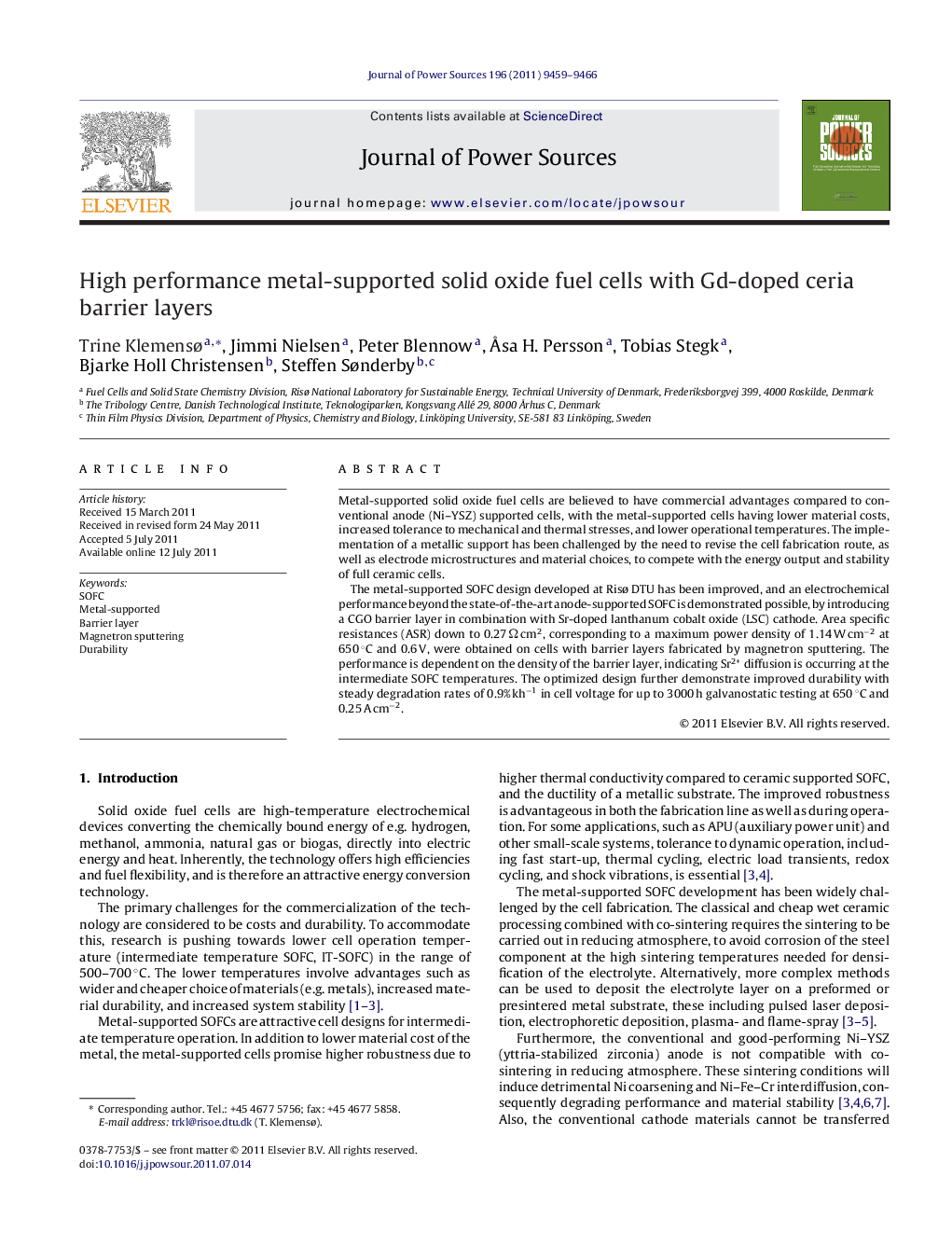| Article ID | Journal | Published Year | Pages | File Type |
|---|---|---|---|---|
| 1284697 | Journal of Power Sources | 2011 | 8 Pages |
Metal-supported solid oxide fuel cells are believed to have commercial advantages compared to conventional anode (Ni–YSZ) supported cells, with the metal-supported cells having lower material costs, increased tolerance to mechanical and thermal stresses, and lower operational temperatures. The implementation of a metallic support has been challenged by the need to revise the cell fabrication route, as well as electrode microstructures and material choices, to compete with the energy output and stability of full ceramic cells.The metal-supported SOFC design developed at Risø DTU has been improved, and an electrochemical performance beyond the state-of-the-art anode-supported SOFC is demonstrated possible, by introducing a CGO barrier layer in combination with Sr-doped lanthanum cobalt oxide (LSC) cathode. Area specific resistances (ASR) down to 0.27 Ω cm2, corresponding to a maximum power density of 1.14 W cm−2 at 650 °C and 0.6 V, were obtained on cells with barrier layers fabricated by magnetron sputtering. The performance is dependent on the density of the barrier layer, indicating Sr2+ diffusion is occurring at the intermediate SOFC temperatures. The optimized design further demonstrate improved durability with steady degradation rates of 0.9% kh−1 in cell voltage for up to 3000 h galvanostatic testing at 650 °C and 0.25 A cm−2.
